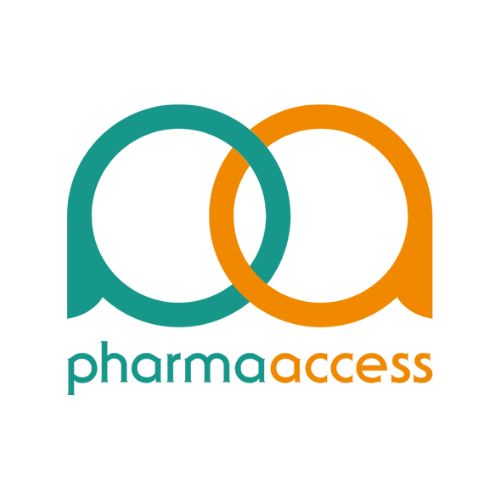Pharma manufacturing is a critical segment of the pharmaceutical industry, ensuring that medicines move from the research lab to the hands of patients in a safe, consistent, and effective form. Behind every tablet, injectable, or capsule lies a highly regulated, complex, and technologically advanced process. As science evolves and global health demands continue to rise, pharma manufacturing is under increasing pressure to innovate, scale, and comply with ever-stricter quality and safety regulations.
At its core, pharma manufacturing is the process of producing pharmaceutical drugs at scle. It includes everything from synthesizing active pharmaceutical ingredients (APIs) to formulating those ingredients into dosage forms, to packaging and labeling the final product. This process must be meticulously controlled to ensure product safety, efficacy, and quality for each and every batch.
The first step in pharma manufacturing typically begins after a new drug has been discovered and tested through preclinical and clinical trials. Once regulatory approval is obtained, companies begin the task of developing commercial manufacturing processes. This phase includes scaling up laboratory procedures to industrial levels, while still ensuring the chemical and physical properties of the product remain consistent. Even small deviations in temperature, pressure, humidity, or ingredient quality can significantly impact the end product, making this phase one of the most technically demanding in the entire drug development lifecycle.
One of the most important concepts in pharma manufacturing is Good Manufacturing Practice (GMP). These are globally accepted standards enforced by regulatory agencies such as the US Food and Drug Administration (FDA), the European Medicines Agency (EMA), and various national authorities. GMP guidelines cover every aspect of production, from the cleanliness of the facility to the training of personnel and the validation of equipment. Non-compliance with GMP can lead to severe consequences, including product recalls, bans on distribution, or loss of manufacturing licenses.
Pharma manufacturing can be broadly categorized into two primary areas: primary and secondary manufacturing. Primary manufacturing involves the production of the active pharmaceutical ingredient, which is the part of the drug that produces the intended therapeutic effect. This can involve chemical synthesis, fermentation, or biotechnology processes. Secondary manufacturing focuses on converting these APIs into consumable forms such as tablets, capsules, syrups, or injectables, and includes the final packaging and labeling of products.
The process of producing APIs is highly sensitive and involves multiple steps of synthesis, purification, drying, and milling. In the case of biologics, the process is even more complex, involving the use of living cells to produce proteins or other biological products. These processes require specialized facilities, often referred to as cleanrooms, that maintain extremely low levels of contaminants and are subject to rigorous environmental control systems.
Secondary pharma manufacturing, although it may appear simpler, is equally challenging. It requires precise mixing of APIs with excipients (inactive substances), compressing or encapsulating them into specific forms, and then ensuring uniformity and stability over the product’s shelf life. Automated systems are used to control variables like weight, hardness, disintegration time, and content uniformity. Quality assurance protocols include frequent sampling and testing during and after production to ensure that each batch meets specifications.
One of the significant shifts in pharma manufacturing over the past decade has been the move toward continuous manufacturing. Unlike traditional batch processing, which produces drugs in set quantities and stops between batches, continuous manufacturing allows for the ongoing production of pharmaceuticals in a streamlined process. This reduces downtime, increases efficiency, minimizes waste, and improves quality control. Regulatory agencies have recognized the benefits of this approach and are encouraging its adoption as a more modern and resilient manufacturing method.
Pharma manufacturing also relies heavily on automation and digital technologies. Automated systems help reduce the risk of human error, improve accuracy, and allow for real-time monitoring of production processes. Manufacturing Execution Systems (MES), data historians, and analytics tools are integrated to monitor critical process parameters. These systems also provide traceability for every step in the production cycle, a crucial feature for both quality assurance and regulatory compliance.
In addition to automation, technologies like artificial intelligence, machine learning, and digital twins are beginning to influence pharma manufacturing. These tools enable predictive maintenance of equipment, early detection of deviations, and better optimization of production cycles. In a highly competitive and regulated market, such technologies provide companies with a strategic edge in reducing costs and ensuring product quality.
Globalization has also impacted pharma manufacturing, with many companies operating facilities or outsourcing production across multiple countries. While this approach can reduce costs, it also introduces complexity in supply chain management, regulatory compliance, and logistics. The COVID-19 pandemic exposed vulnerabilities in global supply chains and has led many companies to rethink their manufacturing strategies. As a result, there is a renewed focus on localized production, dual sourcing of APIs, and increasing supply chain resilience.
Sustainability is another growing concern in pharma manufacturing. The industry is a significant consumer of energy, water, and raw materials, and is under increasing pressure to reduce its environmental impact. Companies are now adopting green chemistry principles, recycling solvents, reducing emissions, and implementing closed-loop systems. Sustainable manufacturing not only helps meet regulatory requirements but also aligns with broader corporate social responsibility goals and consumer expectations.
Personnel and training also play a central role in pharma manufacturing. Operators, technicians, engineers, and quality professionals must be highly trained and aware of GMP standards and safety protocols. As technologies evolve, continuous training and upskilling are essential. Human error remains a risk factor in manufacturing, and companies invest heavily in building a quality culture, where every employee understands the importance of compliance and operational excellence.
Another trend reshaping the landscape is personalized medicine. Treatments tailored to individual patients based on their genetic profile or disease characteristics require new manufacturing approaches. Traditional large-scale batch production may not be suitable for these smaller, more targeted therapies. Pharma manufacturing must adapt by becoming more agile, flexible, and capable of producing smaller lots with the same level of precision and regulatory oversight.
As the pharmaceutical industry continues to innovate, the future of pharma manufacturing looks increasingly sophisticated. Technologies such as 3D printing of tablets, advanced biologic production, and decentralized manufacturing units are on the horizon. These advances aim to reduce time-to-market, enhance accessibility, and improve treatment outcomes. At the same time, regulatory agencies are updating frameworks to keep pace with these innovations, encouraging quality by design (QbD), continuous improvement, and risk-based approaches.
In conclusion, pharma manufacturing is the engine that powers the delivery of healthcare worldwide. It is a discipline where science, engineering, regulation, and technology intersect to ensure that safe, effective medicines are available when and where they are needed. As patient needs grow and evolve, the pharmaceutical manufacturing industry must continue to adapt—embracing innovation, sustainability, and resilience. The stakes are high, but so are the opportunities to make a meaningful impact on human health, now and into the future.



